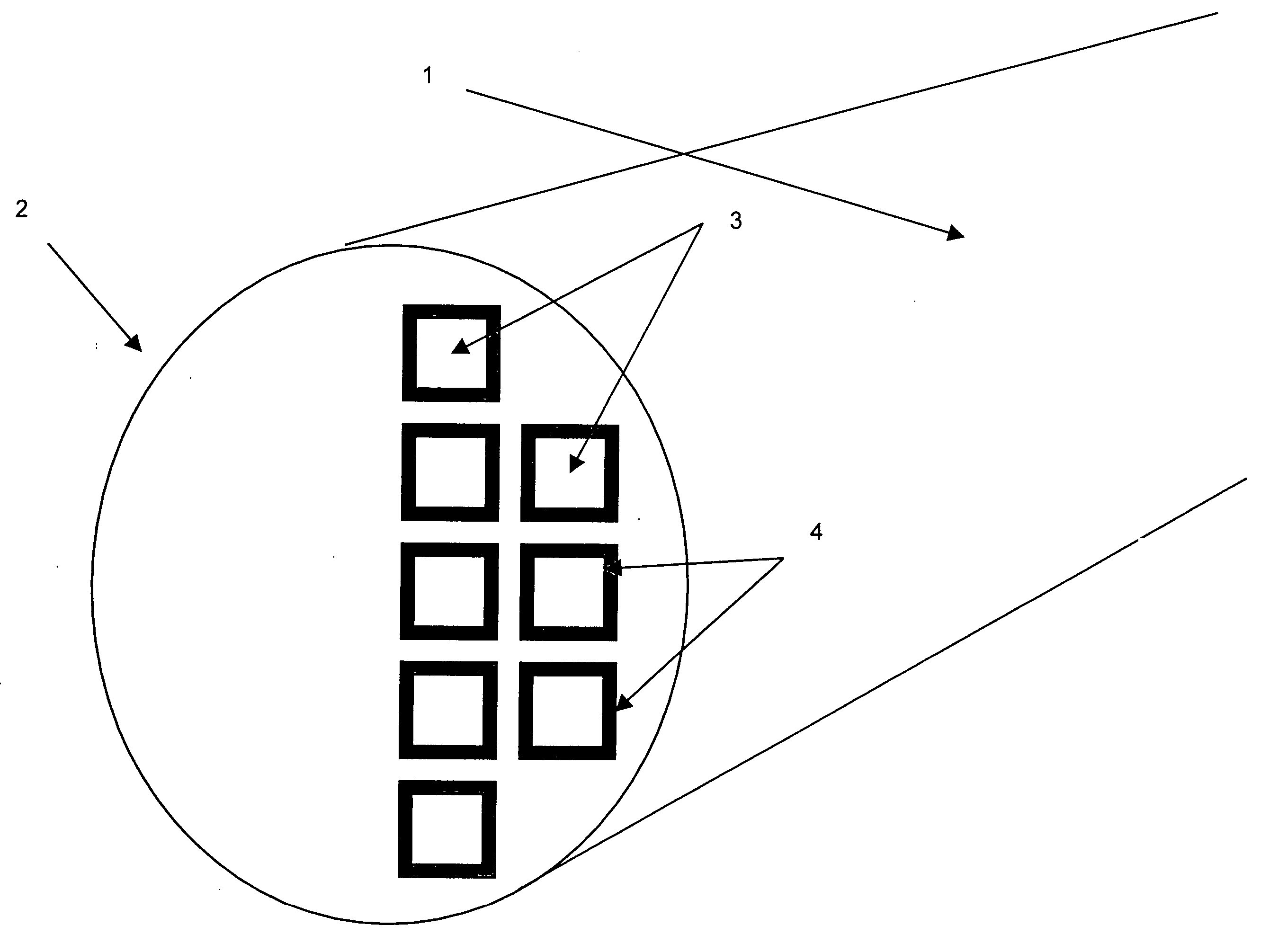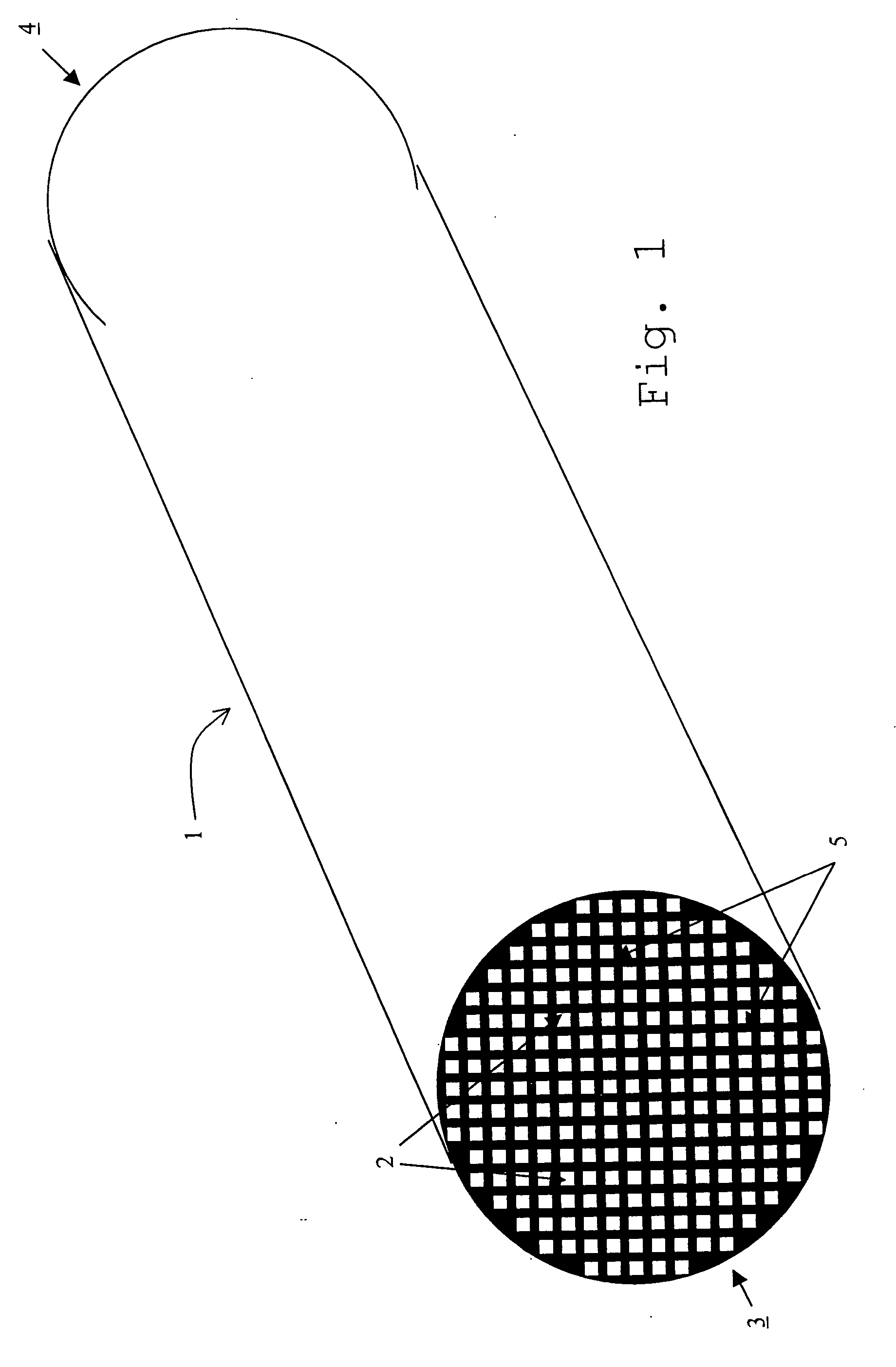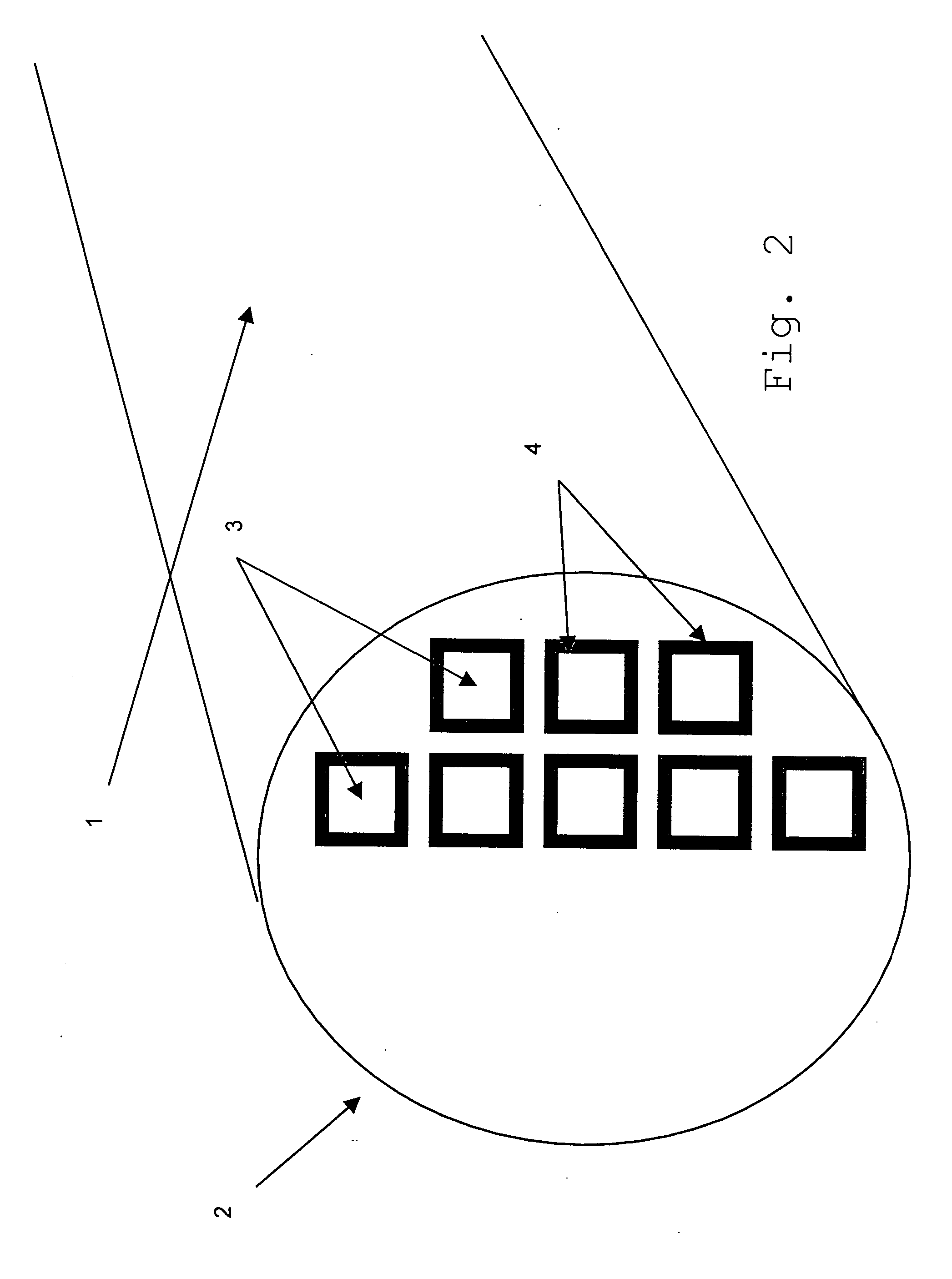Membrane devices using reaction bonded monolith supports
a monolith support and membrane technology, applied in the field of membrane devices, can solve the problems of severe restrictions on the use of materials, large monoliths, etc., and achieve the effect of good chemical durability
- Summary
- Abstract
- Description
- Claims
- Application Information
AI Technical Summary
Benefits of technology
Problems solved by technology
Method used
Image
Examples
example 1
200-gm batches of a mixture containing silicon carbide powder and silicon powder were mixed to press disks for reaction bonding. Table 1 provides the composition of the three batches prepared, with silicon contents increasing from about 10 wt % to 20 wt %.
TABLE 1Batch Compositions for Pressed Disk StudiesMaterialRBSN-1RBSN-2RBSN-3SiC (ca. 40-50 microns)134.38126.91119.45Si (1-5 micron)14.9322.4029.86Methyl Cellulose10.1910.1910.19Ethanol9.799.799.79Stearic Acid3.263.263.26Water23.0023.0023.00PVA (10%)1.711.711.71Ethylene Glycol1.631.631.63Wt. % Si in inorganic fraction (Si +101520SiC)
The mixing order of constituents and observations are as follows: 1. A mixture of stearic acid, Si powder, and ethanol was mixed with a second mixture of water, 10% PVA in water, and ethylene glycol, and finally the methylcellulose to give a stiff paste. 2. SiC was then added, stirred in by hand (very difficult, semi-dry mixes), then lightly stirred (or, more likely, agitated) in a Kitchenaid mixe...
example 2
Coarse silicon carbide powder (2,188 g of ANSI grade SiC (280) from ElectroAbrasives) was combined with fine silicon carbide (548 g of UF-10 from H.C. Starck) and methylcellulose. This dry mixture was sieved through a coarse mesh sieve and stirred for 20 minutes in a 30-quart Hobart mixer.
Stearic acid (150.0 g) was dissolved in warm ethanol (320.0 g). Ethylene glycol (75.0 g) and polyvinyl alcohol (78.5 g of 10% by weight aqueous solution) were mixed into 1108.0 g of water. The stearic acid / ethanol solution was added to the water / ethylene glycol / polyvinyl alcohol solution with vigorous stirring. This solution was stirred with a high-speed mixer until all lumps were broken up.
The liquid components were added slowly to the dry components while mixing in the Hobart mixer. The entire batch was mixed until it took on a clay-like consistency (˜15 minutes). The batch as prepared above was fed into a single auger extruder to produce five billets, approximately 250 mm long by 40 mm wide...
PUM
| Property | Measurement | Unit |
|---|---|---|
| Shrinkage | aaaaa | aaaaa |
| Fraction | aaaaa | aaaaa |
| Length | aaaaa | aaaaa |
Abstract
Description
Claims
Application Information
 Login to View More
Login to View More - R&D
- Intellectual Property
- Life Sciences
- Materials
- Tech Scout
- Unparalleled Data Quality
- Higher Quality Content
- 60% Fewer Hallucinations
Browse by: Latest US Patents, China's latest patents, Technical Efficacy Thesaurus, Application Domain, Technology Topic, Popular Technical Reports.
© 2025 PatSnap. All rights reserved.Legal|Privacy policy|Modern Slavery Act Transparency Statement|Sitemap|About US| Contact US: help@patsnap.com



